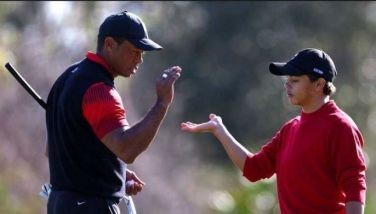The value of physical play
Does your child get enough physical activity? This is a growing concern among parents not just in the Philippines, but throughout Asia. Illnesses such as diabetes were practically non-existent in the region until the late 1980’s. Various fuel and economic crises hurt many economies in the region, requiring the workforce to put in longer hours. Naturally, the first thing to go is physical activity. And tired parents don’t have the copious energy to keep up with restless children. The tendency is to park then in front of a television, or hand them some screen to buy precious time to rest, just this once. But we all know that this act of convenience soon calcifies into a habit, one that seems harmless enough. Or is it?
Consider this: graduates in the mid-1980’s never touched a computer in school. In less than a decade, youth were learning to use computers in Grade 5. Today, kids have weekly computer classes in Grade 1. This acceleration may be good for keeping up with the times but, like any tool, children will discover new uses for it. And parents find it hard to spare the energy to always keep an eye on them. They’re left to their own devices in the Sargasso Sea of the Internet.
Excess weight brings a boatload of other illnesses as one grows older. Cardiovascular health is among the first to suffer as one grows older. For every ten pounds of overweight, your heart pumps the blood a corresponding extra number of miles. Yes, miles. Mediocre endurance has become an acceptable norm, as sitting has become a sizable threat almost on the scale that smoking was 30 years ago. The atrophy creeps up on us gradually, until we notice that two flights of stairs leaves us huffing and puffing. And it is so easy to surrender. Objects at rest (meaning us) tend to stay at rest. Perhaps this fundamental law of physics should be changed to “people who are sedentary tend to stay sedentary”.
On the other hand, increased circulation brings myriad benefits. Greater oxygen delivery to the cells means more energy, heightened alertness and faster recovery. Internal organs function more efficiently, wounds heal faster, digestion is enhanced, and you feel better overall. Can’t go wrong with that, can we?
Tiredness from overwork and lack of sleep deplete the energy of both offspring and parent. If your child attends school in the morning, then he or she is up between 5 and 6:30 am. This, in turn means they are getting less than 9 to 10 hours of sleep, unless they are somehow able to nap in the afternoon. Napping is a vastly underrated means of spurring recovery and growth. It is a strong but untapped factor in helping children grow taller. Remember, children are constantly building tissue. Rest is crucial to their development.
But children who are stressed are unable to properly rest during the day, unless they have some form of physical activity. This does not mean formal sport training, but can involve free play, running, biking, any aerobic activity. Get them out of the house, into the open, where they can move about. Children have a natural tendency to seek physical movement, a physiological stimulus. Sometimes, it is blunted by fatigue and stress. Lifting inordinately heavy school bags, being overburdened with homework, and having responsibilities disproportionate to their age all make them seek rest, instead. Children who regularly lift heavy loads, like those who carry water in far-flung areas, are usually short, but have the limbs of someone taller. The same is true for most child actors. Late nights and exposure to harsh lighting combine to stunt growth. This is obviously extreme, but quite common in rural and poorer urban areas.
So what is appropriate for your child? First, something that is not too strenuous, and does not require lifting. Developing bones may grow curved by the wrong position, or heavy weights. Just look at those who grew up pressing their arms against their parents when carried. The elbow joints bend further out than those of others. This is comparable to infants who had pillows placed under their heads early in infancy; the backs of their heads are flat. Everything has its place and time. And if your child enjoys it, you will actually struggle making them stop. Ask any parent whose son fell in love with basketball, or swimming, or any other sport, for that matter. What is important is helping your child find the sport or activity he likes.
There are a handful of things to remember to keep your child playing safely. First, keep them hydrated, more so when they’re being active. What most people don’t understand is that when you’re thirsty, you’re already dehydrated. Secondly, keep them out of direct heat when outdoors, particularly after 10 am until past 2 pm. Heat stroke also has many accompanying dangers. Third, join them when you can. These memories of doing things together will last a lifetime. Lastly, find a way to support your child’s passions. We spend most of our lives seeking what we are meant to do. Lucky are the few who find it early on. And your children will forever be grateful.
- Latest
- Trending
































